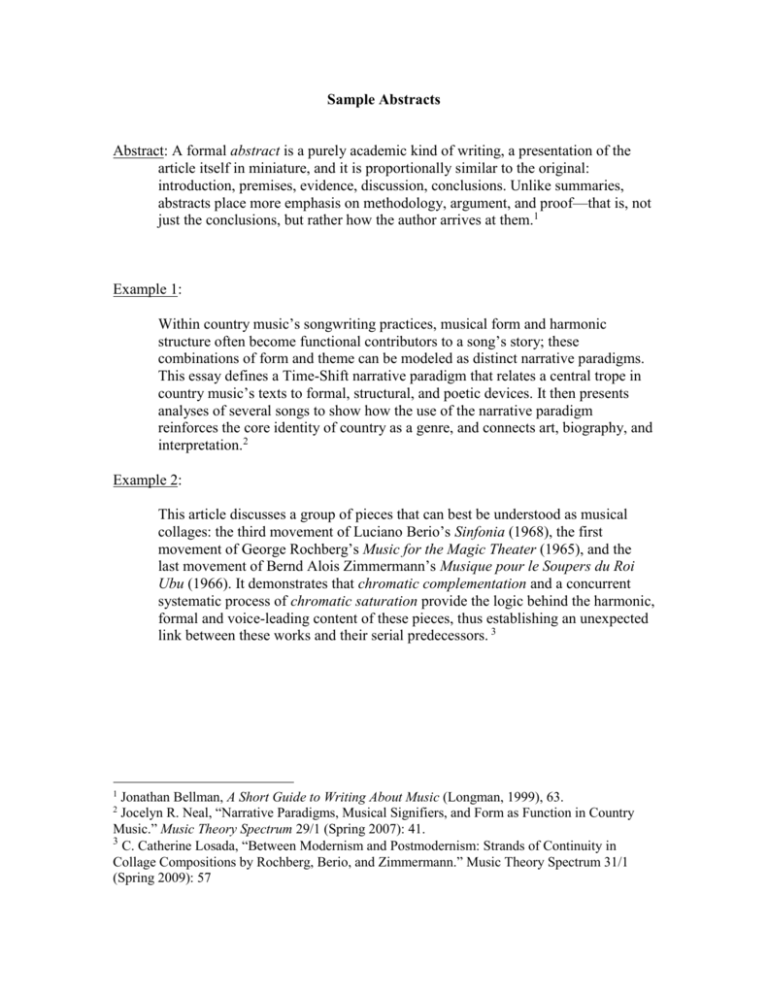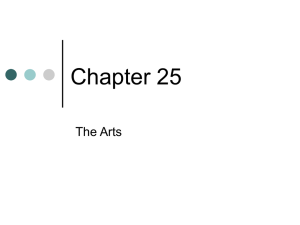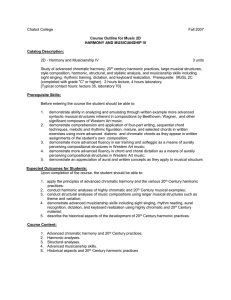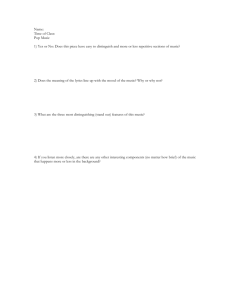Word Document
advertisement

Sample Abstracts Abstract: A formal abstract is a purely academic kind of writing, a presentation of the article itself in miniature, and it is proportionally similar to the original: introduction, premises, evidence, discussion, conclusions. Unlike summaries, abstracts place more emphasis on methodology, argument, and proof—that is, not just the conclusions, but rather how the author arrives at them.1 Example 1: Within country music’s songwriting practices, musical form and harmonic structure often become functional contributors to a song’s story; these combinations of form and theme can be modeled as distinct narrative paradigms. This essay defines a Time-Shift narrative paradigm that relates a central trope in country music’s texts to formal, structural, and poetic devices. It then presents analyses of several songs to show how the use of the narrative paradigm reinforces the core identity of country as a genre, and connects art, biography, and interpretation.2 Example 2: This article discusses a group of pieces that can best be understood as musical collages: the third movement of Luciano Berio’s Sinfonia (1968), the first movement of George Rochberg’s Music for the Magic Theater (1965), and the last movement of Bernd Alois Zimmermann’s Musique pour le Soupers du Roi Ubu (1966). It demonstrates that chromatic complementation and a concurrent systematic process of chromatic saturation provide the logic behind the harmonic, formal and voice-leading content of these pieces, thus establishing an unexpected link between these works and their serial predecessors. 3 1 Jonathan Bellman, A Short Guide to Writing About Music (Longman, 1999), 63. Jocelyn R. Neal, “Narrative Paradigms, Musical Signifiers, and Form as Function in Country Music.” Music Theory Spectrum 29/1 (Spring 2007): 41. 3 C. Catherine Losada, “Between Modernism and Postmodernism: Strands of Continuity in Collage Compositions by Rochberg, Berio, and Zimmermann.” Music Theory Spectrum 31/1 (Spring 2009): 57 2











